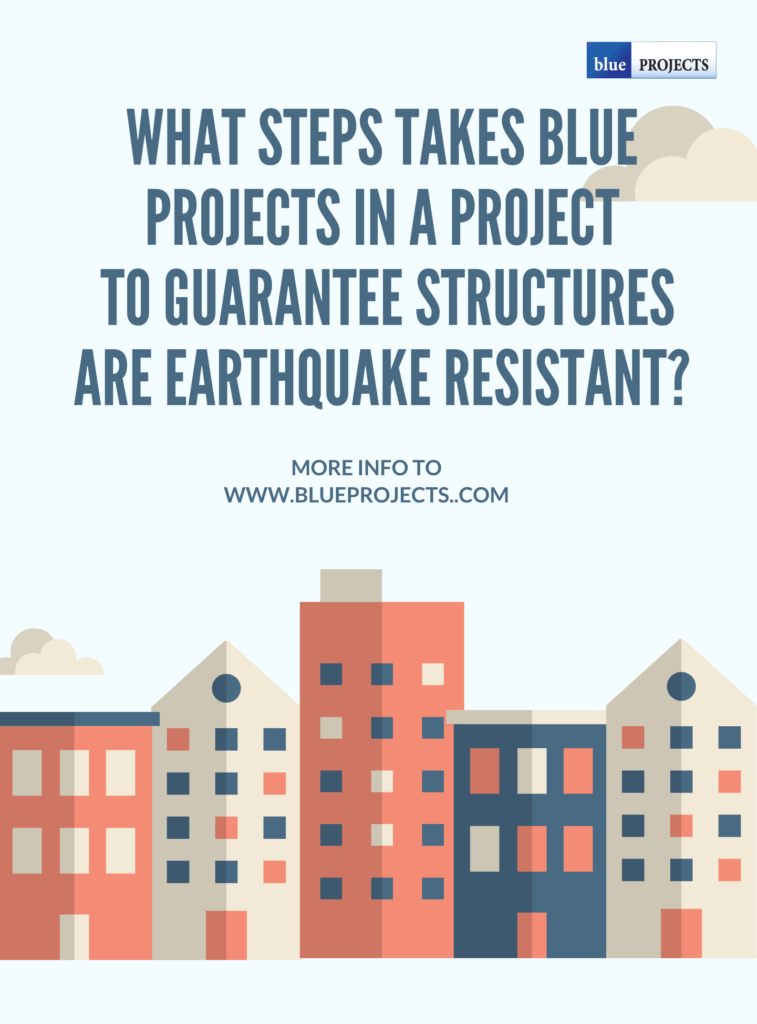What steps Blue Projects takes in a project to guarantee structures are earthquake resistant?

What steps takes Blue Projects in a project to guarantee
structures are earthquake resistant?
We’re on a mission to create a tomorrow that is safe for all of us. We firmly believe that in order to build a more secure future the key objective is to share our experience and knowledge.
Bulent Odabasi, Structural & Technological Project Engineering, shares how Blue Projects helps clients make their projects earthquake safe.
Buildings should not be allowed on or near the fault line to avoid direct damage to structures caused by fault rupture. Furthermore, building should not be permitted where the potential for ground failure, such as earthquake-induced landslides or liquefaction, is high.
Blue Projects supports its clients during Masterplan phase by considering the issues mentioned above.
Considering that soil conditions are not homogenous everywhere, site specific exploration (field & laboratory tests) is crucial to determine the site response / classification / amplification factors / dynamic soil properties, which must be taken into account during soil–foundation–structure interaction analysis.
Geotechnical report will contain all those information listed above since geophysical, geological, and geotechnical engineers are involved for the relevant studies.
Blue Projects supports its clients by collaborating with qualified/certified geotechnical investigation companies.
In case soil improvement or piling is recommended in the geotechnical report, then geotechnical engineers shall be involved for the relevant design.
Blue Projects supports its clients by collaborating with experienced consultants on geotechnical engineering & works.
Having the geotechnical investigation engineering report in hand, now it is civil/structural engineers’ duty to comply with the earthquake design code and perform an earthquake-resistant design.
Earthquake-resistant structures are designed to withstand the largest earthquake (rare but with a certain probability to occur) that is likely to occur at their location by preventing collapse of the structures and by following the performance-based design requirements (defined in seismic codes) according to the target performance levels (immediate occupancy / controlled damage / life safety)
Three fundamental requirements for the structures shall be met:
- The structure must have sufficient stiffness to reduce the lateral displacements of the structure to tolerable levels.
- The structure must have sufficient strength to resist the inertial forces imposed by the ground motion.
- The detailing of the structure must be adequate to guarantee an appropriate level of toughness to retain a substantial portion of its strength when responding in the nonlinear range under displacement reversals.
Having met these requirements, the loss of life should be minimized during rare large-magnitude earthquakes while the loss of the functionality should be limited during more frequent moderate-magnitude earthquakes.
Structural materials that satisfy the required properties stated in the code (strength, ductility etc.) shall be used.
Blue Projects has a highly qualified /experienced structural engineering team, who remain current with the codes and who completed lots of projects successfully.
Construction shall not deviate from the design drawings without an approval from the structural designer. Construction team shall be well experienced and shall not cause quality issues.
Starting with the earthworks, construction shall be inspected by a qualified 3rd party.
Blue Projects assists its clients by sending a construction management team to the job site if the client requests it.
No matter which structural system or material type is selected, how poor the soil condition is, or how much the seismicity is high, it is possible to have structures, which do not collapse, by following the steps mentioned above.